That sudden, sharp stab in the hip – it’s more than just discomfort; it can stop you in your tracks, making even the simplest of tasks feel daunting. You’re not alone in facing this jolting sensation, and many find it frustratingly elusive to pinpoint its cause or find a consistent remedy. But here’s the silver lining: understanding the nature of this pain and having the right exercises in your toolkit can transform your experience. Whether you’re an athlete sidelined by this stabbing pain in your hip or someone just trying to get through a regular day without that unexpected ‘pinch’, this guide promises insights and actionable exercises to pave your way back to comfort.
Contents
Possible Causes Behind the Sharp Sensation
 Stabbing hip pain can strike out of nowhere, and the sharpness of the pain often leaves individuals alarmed. Delving into the root causes can provide clarity and guide effective interventions. Here are some potential culprits:
Stabbing hip pain can strike out of nowhere, and the sharpness of the pain often leaves individuals alarmed. Delving into the root causes can provide clarity and guide effective interventions. Here are some potential culprits:
- Nerve Impingement: Often referred to as a ‘pinched nerve’, this occurs when too much pressure is applied to a nerve by surrounding tissues. In the hip, this can be due to inflammation, injury, or even a herniated disc in the spine.
- Trochanteric Bursitis: The bursa is a fluid-filled sac that acts as a cushion between the bones and soft tissues. Inflammation of the bursa located on the outer part of the hip, known as trochanteric bursitis, can result in sharp, stabbing pain.
- Hip Labral Tear: The labrum is a ring of cartilage that follows the outside rim of your hip joint socket. A tear in this area, often caused by trauma or overuse, can lead to a sharp sensation in the hip.
- Muscle or Tendon Strain: Overstretching or tearing of the muscles or tendons in the hip region can result in acute pain. This is common among athletes or those who engage in high-intensity activities without proper warm-up.
- Hip Fracture or Stress Fracture: Particularly prevalent in older adults or those with bone-density issues, even small fractures can produce sharp pain, especially during weight-bearing activities.
Understanding the cause behind the pain is the first step. Once identified, tailored treatments and exercises can be pursued to alleviate discomfort and prevent recurrence.
How Can You Manage This Stabbing Pain In Your Hip?
Finding yourself jolted by an unexpected sharp pain in your hip can be not only uncomfortable but deeply concerning. Fortunately, targeted exercises, when done correctly, can offer both relief and fortification against future flare-ups. Here are some exercises specifically designed to counteract that stabbing sensation in the hip:
Hip Flexor Stretch
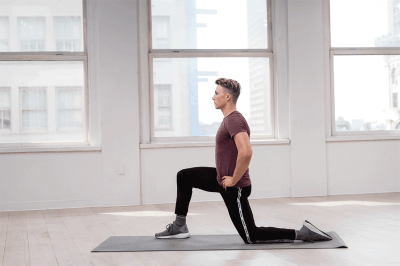
- Start in a lunge position, with one foot forward and the other extended straight back, toes pointing down.
- Keeping your back straight, gently push your hips forward until you feel a stretch in the front of the hip.
- Hold for 20-30 seconds, and then switch sides.
Piriformis Stretch
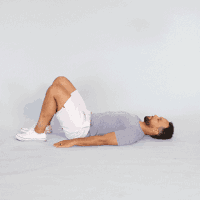
- Lie on your back with both knees bent and feet flat on the floor.
- Cross one ankle over the opposite thigh just above the knee.
- Hold the thigh of the leg on the floor and pull it towards your chest.
- You should feel a stretch in the buttock of the crossed leg.
- Hold for 20-30 seconds, then switch sides.
Hip Abduction

- Lie on your side with your legs straight and stacked on top of each other.
- Lift the top leg up to about 45 degrees, then slowly lower it back down.
- Perform 10-15 repetitions on each side.
Bridges
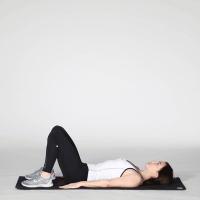
- Lie on your back with your knees bent and feet flat on the ground, hip-width apart.
- Pushing through your heels, lift your hips off the ground by squeezing your glutes.
- Hold the top position for a moment, then slowly lower back down.
- Complete 10-15 repetitions.
Clamshells

- Lie on your side with your legs bent at a 90-degree angle, one on top of the other.
- Keeping your feet together, lift the top knee as high as you can without moving your pelvis.
- Slowly bring it back down.
- Do 10-15 repetitions on each side.
While these exercises can provide immediate relief, remember that consistency is key. It’s also vital to ensure that you’re performing them with the correct technique to avoid further complications.
Strengthening Moves for Long-Term Benefits
While immediate relief is essential, the journey to a pain-free hip doesn’t stop there. Building strength in the hip area not only fortifies the joint against future issues but also promotes overall mobility and stability. Here are some effective strengthening exercises to incorporate into your routine:
Single-Leg Deadlift

- Stand on one leg with a slight bend in the knee.
- Holding a light weight in the opposite hand, hinge forward at the hips while extending the non-standing leg straight behind you.
- Keep your back straight and return to the starting position.
- Do 10-12 repetitions on each side.
Standing Hip Extension
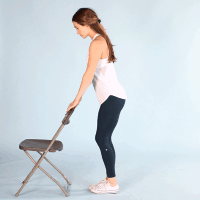
- Stand upright holding onto a chair or wall for support.
- Extend one leg straight behind you without arching your back.
- Squeeze the glutes at the top of the movement.
- Slowly return to the starting position.
- Perform 10-12 repetitions on each side.
Fire Hydrants
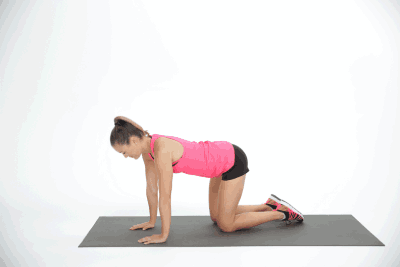
- Start on your hands and knees in a tabletop position.
- Keeping your knee bent, lift one leg out to the side.
- Lower it back to the starting position.
- Do 10-12 reps on each side.
Hip Circles
- Begin in the same tabletop position.
- Lift one leg and make circular motions in the air, both clockwise and counterclockwise.
- Perform this for 30 seconds on each side.
Resistance Band Walks

- Place a resistance band around your ankles or just above the knees.
- Stand with feet shoulder-width apart, creating tension in the band.
- Step to the side, followed by the other foot. Do this in one direction, then the other.
- Continue for 10-12 steps in each direction.
Box Squats
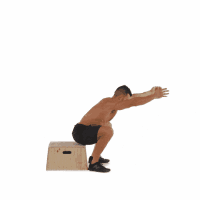
- Begin by standing in front of a chair or bench.
- Lower yourself down until your buttocks lightly touch the chair, then push through your heels to stand back up.
- Ensure your knees are in line with your toes throughout the movement.
- Complete 10-12 repetitions.
These strengthening moves offer a dual benefit: alleviating existing pain and preventing its recurrence. By making them a regular part of your fitness routine, you’re setting yourself up for optimal hip health.
When to Seek Professional Guidance
The journey to recovering from hip pain, particularly a stabbing sensation, is unique to every individual. While home exercises and self-care can work wonders for many, there are times when it’s essential to acknowledge that professional help may be necessary. Recognizing and acting on these signs can be the difference between swift recovery and prolonged discomfort.
- Persistent Pain: If the stabbing pain in your hip persists even after consistently following home exercises and remedies for a few weeks, it’s a clear sign that you should consult a professional.
- Increasing Intensity: Any increase in the severity of pain or frequency of episodes should be a cause for concern. If the pain starts affecting your daily activities or sleep patterns, it’s time to seek guidance.
- Limited Mobility: Difficulty in walking, standing up from a seated position, or any restricted range of motion can indicate a more serious underlying issue.
- Associated Symptoms: If the hip pain is accompanied by other symptoms like swelling, fever, numbness, or tingling sensations, it’s crucial to get it checked.
- Post-Injury: If your pain began after a specific injury or accident and doesn’t seem to be improving, it might be beneficial to have a professional assess the extent of the damage.
Treatment Options for Stabbing Hip Pain
- Physical Therapy: One of the most beneficial treatments, physical therapy focuses on targeted exercises, stretches, and maneuvers to alleviate pain, improve mobility, and strengthen the hip region.
- Medications: Over-the-counter pain relievers or prescribed medications can help in reducing inflammation and providing temporary relief.
- Injections: Corticosteroid injections can provide relief from severe pain and inflammation in the hip joint.
- Regenerative Therapies: Treatments like platelet-rich plasma (PRP) injections utilize the body’s natural healing mechanisms to repair damaged tissues.
- Surgery: In rare cases, when conservative treatments don’t help, surgical interventions like hip arthroscopy might be considered to address the root cause of the pain.
Remember, while self-help exercises and remedies are valuable, they are not a substitute for professional medical advice. The body often communicates through pain, and it’s our responsibility to listen and respond accordingly. If in doubt, always prioritize your health and consult a specialist.
Conclusion
Stabbing pain in the hip can be more than just a temporary inconvenience; it can be a signal from your body asking for attention and care. While the exercises and tips shared in this article can offer some relief, every individual’s journey with pain is unique. Remember, you don’t have to navigate this journey alone. Professional guidance can provide tailored solutions and a clearer path to recovery. If you’re experiencing Hip pain, physical therapy for hip pain at PhysioMantra can help: Book an online physical therapy session.



